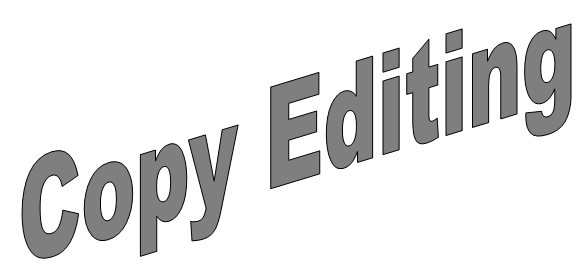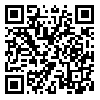Volume 8 - Early Access
pbp 2026, 8 - Early Access: 0-0 |
Back to browse issues page
Download citation:
BibTeX | RIS | EndNote | Medlars | ProCite | Reference Manager | RefWorks
Send citation to:



BibTeX | RIS | EndNote | Medlars | ProCite | Reference Manager | RefWorks
Send citation to:
Nasiri A A. Herbal and Headache: A Review of Principal Medicinal Plants Utilized in Headache Management. pbp 2026; 8
URL: http://pbp.medilam.ac.ir/article-1-303-en.html
URL: http://pbp.medilam.ac.ir/article-1-303-en.html
Department of Anesthesiology, School of Medicine, Imam Khomeini Hospital, Urmia University of Medical Sciences, Urmia, Iran , nasiriali7@gmail.com
Abstract: (714 Views)
Objective: Headache is one of the most common somatic complaints, often triggered by factors such as stress, fatigue, dehydration, or neurological disturbances. Its manifestations vary in type and intensity and frequently impair quality of life. Treatment depends largely on identifying the underlying cause and may involve lifestyle modifications in combination with pharmacological interventions. However, recurrent use of synthetic analgesics can lead to complications such as gastrointestinal irritation, hepatic damage, and drug dependence. Caution is therefore warranted, and medical supervision is recommended when using such medications. In this context, the present review highlights the principal medicinal plants employed in Iranian traditional medicine for headache management.
Methodology: A comprehensive literature search was performed using the keywords “medicinal plants,” “headache,” “traditional medicine,” and “Iran” across major scientific databases, including PubMed, Scopus, Google Scholar, and Web of Science.
Results: The review identified a wide range of herbs traditionally used in Iranian medicine for headache relief. These include peppermint, valerian, lavender, coriander, German chamomile, sage, licorice, vervain, black tea, ginger, violet, green tea, Syrian rue, basil, thyme, cinnamon, rosemary, lemon balm, St. John’s wort, black pepper, willow, passionflower, orange blossom, borage, oregano, saffron, fennel, Damask rose, marshmallow, hyssop, and walnut.
Conclusion: Iranian traditional medicine provides a rich pharmacopeia of medicinal plants that represent effective and generally well-tolerated alternatives to synthetic treatments for headache. These remedies offer a natural therapeutic option with fewer side effects. Nevertheless, further clinical research is required to validate their efficacy and facilitate their integration into evidence-based medical practice.

Methodology: A comprehensive literature search was performed using the keywords “medicinal plants,” “headache,” “traditional medicine,” and “Iran” across major scientific databases, including PubMed, Scopus, Google Scholar, and Web of Science.
Results: The review identified a wide range of herbs traditionally used in Iranian medicine for headache relief. These include peppermint, valerian, lavender, coriander, German chamomile, sage, licorice, vervain, black tea, ginger, violet, green tea, Syrian rue, basil, thyme, cinnamon, rosemary, lemon balm, St. John’s wort, black pepper, willow, passionflower, orange blossom, borage, oregano, saffron, fennel, Damask rose, marshmallow, hyssop, and walnut.
Conclusion: Iranian traditional medicine provides a rich pharmacopeia of medicinal plants that represent effective and generally well-tolerated alternatives to synthetic treatments for headache. These remedies offer a natural therapeutic option with fewer side effects. Nevertheless, further clinical research is required to validate their efficacy and facilitate their integration into evidence-based medical practice.

Type of Study: Research |
Subject:
Herbal Drugs
Received: 2025/02/20 | Accepted: 2025/05/20 | Published: 2025/12/1
Received: 2025/02/20 | Accepted: 2025/05/20 | Published: 2025/12/1
References
1. Jahangiri Fard A, Babaee T, Alavi SM, Nasiri AA, Ghoreishi SM, Noori NM, et al. Intravenous patient-controlled remifentanil versus paracetamol in post-operative pain management in patients undergoing coronary artery bypass graft surgery. Anesth Pain Med. 2014;4(5):e19862. doi: 10.5812/aapm.19862. doi: 10.5812/aapm.19862.
2. Silberstein SD. Headache in clinical practice. London: Routledge; 2018.
3. Robbins MS. Diagnosis and management of headache: a review. JAMA. 2021;325(18):1874–85.
4. Rahimi M, Golparvar M, Hashemi ST, Nasiri A. The effect of adding magnesium sulfate, neostigmine and fentanyl to ropivacaine on sensory-motor block properties in lower extremity surgery under spinal anesthesia. J Isfahan Med Sch. 2022;40(689):766–74. doi: 10.48305/jims.v40.i689.0766.
5. Rasmussen BK. Epidemiology of headache. Cephalalgia. 1995;15(1):44–67. doi: 10.1046/j.1468-2982.1995.1501045.x.
6. Vikelis M, Spingos KC, Rapoport AM. A new era in headache treatment. Neurol Sci. 2018;39(Suppl 1):47–58.
7. Robbins MS. Diagnosis and management of headache: a review. JAMA. 2021;325(18):1874–85.
8. Ogunlaja OI, Goadsby PJ. Headache: treatment update. eNeurologicalSci. 2022;29:100420. doi: 10.1016/j.ensci.2022.100420
9. Moskowitz MA. Pathophysiology of headache—past and present. Headache. 2007;47:1–2.
10. Diener HC, Dodick D, Evers S, Holle D, Jensen RH, Lipton RB, et al. Pathophysiology, prevention, and treatment of medication overuse headache. Lancet Neurol. 2019;18(9):891–902.
11. Diener HC, Dodick D, Evers S, Holle D, Jensen RH, Lipton RB, et al. Pathophysiology, prevention, and treatment of medication overuse headache. Lancet Neurol. 2019;18(9):891–902.
12. Silberstein SD. Headache in clinical practice. Routledge; 2018 May 8.
13. Levin M. Herbal treatment of headache. Headache. 2012;52(Suppl 2):76–80.
14. Nasiri AA. Anesthetic herbs: a review of the most important anesthetic medicinal plants in traditional medicine. Plant Biotechnol Persa. 2025;7(4):0–.
15. Nesbitt AD, Leschziner GD, Peatfield RC. Headache, drugs and sleep. Cephalalgia. 2014;34(10):756–66.
16. Jónsdóttir M, Meyer JS, Rogers RL. Efficacy, side effects and tolerance compared during headache treatment with three different calcium blockers. Headache. 1987;27(7):364–9.
17. Prajapati S, Vinode PK. Various remedies for management of migraine: a short review. Aten Primaria. 2022;54(2):1–5.
18. Amini M, editor. Makhzan al-Adwiyah. 1st ed. Tehran: Institute of Medical History, Islamic and Complementary Medicine, Iran University of Medical Sciences; 2008.
19. Ansari M. Ikhtiyarat Badi‘i. 1st ed. Tehran: Institute of Medical History, Islamic and Complementary Medicine, Iran University of Medical Sciences; 2009.
20. Qarashi A. Qarabadin-e-Kabir. 2nd ed. Tehran: Institute of Medical History, Iranian Traditional Medicine; 2010.
21. Zargari A. Medicinal Plants. Vols. 1–5. Tehran: Tehran University Publications; 1990.
22. Avicenna (Ibn Sina). The Canon of Medicine (Al-Qanun fi al-Tibb). 1st ed. Sharafkandi A, translator. Tehran: Soroush Press; 2005.
23. Nazem J. Exir-e Azam (The Great Elixir). Vols. 1–4. Tehran: Institute of Medical History; 2011.
24. Rhazes (al-Razi). Al-Hawi (Liber Continens). 1st ed. Tehran: Institute for the History of Science; 2009.
25. Tabarsi A. Tohfat al-Mu’minin. 2nd ed. Qom: Esmaeilian Publishing; 2006.
26. Ahvazi AIA. Kamel al-Sanaat al-Tibbiyya. Vols. 1–3. Tehran: Research Institute of Iranian Traditional Medicine; 2012.
27. Arzani MA. Tibb-e-Akbar. 1st ed. Tehran: Research Institute of Iranian Traditional Medicine; 2008.
28. Chashti N. Yadgar-e-Hakim. 1st ed. Tehran: Institute for Traditional Medicine Studies; 2010.
29. Jorjani I. Zakhireye Kharazmshahi (Treasure of Kharazmshah). Vols. 1–2. Tehran: Iranian Academy of Medical Sciences; 2008.
30. Ghaeni H. An Introduction to Iranian Medicinal Plants. 1st ed. Mashhad: Ferdowsi University Press; 2004.
31. Mozaffarian V. Identification of Medicinal and Aromatic Plants of Iran. 1st ed. Tehran: Farhang Moaser Publishers; 2006.
32. Rechinger KH. Flora Iranica. Vols. 1–176. Graz: Akademische Druck- und Verlagsanstalt; 1963–2010.
33. McCluggage LK. Herbal medications. About the Oxford American Handbooks in Medicine. 2009:159.
34. Jivad N, Asadi-Samani M, Moradi MT. The most important medicinal plants effective on migraine: a review of ethnobotanical studies in Iran. Der Pharma Chemica. 2016;8(2):462–6. Available from: http://derpharmachemica.com/archive.html
35. Rouhi-Boroujeni H, Asadi-Samani M, Moradi MT. A review of the medicinal plants effective on headache based on the ethnobotanical documents of Iran. Der Pharm Lett. 2016;8(3):37–42. Available from: http://scholarsresearchlibrary.com/archive.html
36. Abbaszadeh S, Karami N, Bahmani F, Abbasi N. Headache and herbal medicine: An ethnobotanical study of Shahrekord, Southwest of Iran. Plant Biotechnol Persa. 2019;1(1):10–7. https://dor.isc.ac/dor/20.1001.1.26767414.2019.1.1.4.8
37. Wei TH, Hsieh CL. Headaches, migraine, and herbal medicine. In: Treatments, nutraceuticals, supplements, and herbal medicine in neurological disorders. 1st ed. San Diego: Academic Press; 2023. p. 401–19.
38. Rawat C, Kukal S, Dahiya UR, Kukreti R. Cyclooxygenase-2 (COX-2) inhibitors: future therapeutic strategies for epilepsy management. J Neuroinflammation. 2019;16(1):197.
39. Ajmone-Cat MA, Bernardo A, Greco A, Minghetti L. Non-steroidal anti-inflammatory drugs and brain inflammation: effects on microglial functions. Pharmaceuticals. 2010;3(6):1949–65. doi: 10.3390/ph3061949.
40. Dhir A. An update of cyclooxygenase (COX)-inhibitors in epilepsy disorders. Expert Opin Investig Drugs. 2019;28(2):191–205. doi: 10.1080/13543784.2019.1557147.
Send email to the article author
| Rights and permissions | |
 |
This work is licensed under a Creative Commons Attribution-NonCommercial 4.0 International License. |






